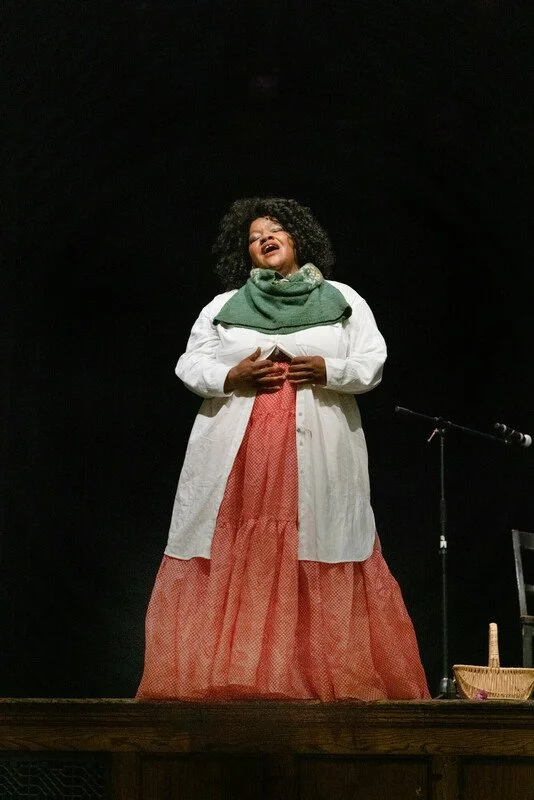New Yo La Tengo album looks frankly at the state of the world
Yo La Tengo, a New Jersey-based band founded in the 1980s, released their 17th album, “This Stupid World,” in February. The album’s nine songs trace topics such as aging, death, and perseverance. Photo courtesy of Ricardo Romanoff via Flickr.
By Lucy Oster ’23
Arts & Entertainment Editor
I am always wondering if life is either good or bad — a reductive way of looking at the world, but I can’t help it. Lately, I’ve been reluctantly settling on the latter, as romantic heartbreak looms eternally and trains tip and spill poison. When I feel like this, I turn to people with years on me, who have seen so much bad and good that they’ve learned to take the two extremes with a grain of salt, knowing it can all change so quickly.
“This Stupid World,” released on Feb. 10, is the 17th album from New Jersey-based band Yo La Tengo. Clocking in at nine songs, a respectable number for an objectively late-career release, “This Stupid World” does not blow up the Yo La Tengo sound established on prior albums such as their previous 2018 album, “There’s A Riot Going On,” in any way, and that can be appreciated in a world that can be so destructive otherwise. After all, how can artists remain authentic and produce something unorthodox if they’ve spent decades consistently releasing albums? Specifically, how can an independent rock artist continue writing music about love and sadness, the most obtuse yet overdone topics? The answer to these questions has yet to be discovered, but it’s clear that Yo La Tengo has a clue, and their new album can help steer you through the messy nuances of life.
The album starts as expected for an indie rock band: with a lot of messy guitar and a steady drumbeat. Yo La Tengo formed in the 1980s, and this will likely affect their music style for as long as they produce it, with rougher-sounding musical attributes and soft vocals defining the band. These sounds are present on the new album, and especially in the two first songs on the album, “Sinatra Drive Breakdown” and “Fallout.” The songs on “This Stupid World” are generally lyrically lean with longer musical interludes. The lyrics that do emerge are poignant to many aspects of life. The album, after all, has a title that seeks to define the world, and the band has certainly been around the block.
“Fallout,” the first single and the album’s most-played song on Spotify, is about a desire to “fall out of time” because “every day it hurts to look.” The sentiment is not positive, but it’s delivered in an honest tone. As I listen to the song, I cannot always disagree with the desire to fall out of time briefly, and I feel relieved that I am not so alone in it.
Much of the album seems to cover aging and even death. “Until It Happens,” asks the listener to “Look away from the hands of time” and even “Prepare to die.” The last song on the album, “Miles Away,” wisely remarks: “The pain creeps in anyhow / You feel alone / Friends are all gone / Keep wiping the dust from your eyes.” The “keep” in the action of wiping the dust from your eyes is key to “This Stupid World.” Consistency and keeping on will change one’s perspective on life from bad to good and back again forever until it all ends.
Nuance is everything in this stupid world, and everything in “This Stupid World” as well. The songs are sonically harsh with soft lyrics, and the meaning behind the lyrics is full of nuance as well. “Sinatra Drive Breakdown” has the lyric “I see the moon rise as the sun descends.” Change is the only constant that we can rely on. Still, not all of the songs on the album are so bleak, as not all aspects of life are. “Tonight’s Episode” is bouncier than the other songs in Yo La Tengo’s repertoire, with fun lyrics about walking dogs, milking cows and the Japanese dish Shabu-shabu. Vocalist and guitarist Ira Kaplan even remarks, “I’ll show you a yo-yo trick.” Kaplan and one of the other members of the three-person band, Georgia Hubley, are married, and that domesticity shines through in “This Stupid World.” Married life also appears on the album in sadder ways, such as the song “Apology Letter,” where Kaplan sings, “If I were to smile at you / Would you smile at me?”
At the beginning of “Aselestine,” the second single, Hubley chuckles in the song’s prelude before sharing a gentle song. The lyrics are not sweet, proclaiming, “Where are you? / The drugs don’t do / What you said they do.” Yet, the tone is lifting and a release from the sonically harsher noises. Here, Yo La Tengo demonstrates that a compositionally soft song can encompass some of the bleakest lyrics, the opposite of their usual mode of louder songs and sweeter lyrics.
“This Stupid World” reveals that we cannot separate the bad and good from life. They are intricately tied up together, and they both make the other stronger with their contrast. I can, and even have to, appreciate both if I want to enjoy living even a little bit. After all, as the album’s titular song says, “This stupid world / It’s killing me / This stupid world / Is all we have.”
Maggie Millner’s ‘Couplets’ explores queerness and change
Poet Maggie Millner, left, sits beside author and Assistant Professor of English Andrea Lawlor, right, at Riffraff Bookstore and Bar, in Providence, RI. Photo courtesy of Kylie Gellatly FP ‘23.
By Emma Watkins ’23
Managing Editor of Content
“I became myself. / I became myself. / No, I always was myself. / There’s no such person as myself. ” The opening lines of Maggie Millner’s “Proem” reverberate due to both her clever use of exact rhyme and the introduction of the dynamic, ever-changing narrator. On the dust jacket at the opposite end of the book, Millner’s author photo gazes directly into the reader’s face, her reclined posture echoing the ease and intimacy with which her poetry and prose reveal her thoughts on love, queerness, sex, identity and discovery. Millner joined author and Mount Holyoke Clara Willis Phillips Assistant Professor of English Andrea Lawlor in conversation at Riffraff Bookstore and Bar in Providence, Rhode Island, on Friday, Feb. 17. In the hour that followed Millner’s selected readings, the two authors, which Millner referred to as “the best possible pairing,” discussed queer literary traditions and the playfulness of experimenting with form.
“I became myself. / I became myself. / No, I always was myself. / There’s no such person as myself.”
Drawing readers in with an eye-catching mirrored title and a bright red and pink cover, Millner’s 2023 debut, “Couplets,” proclaims itself a love story. At the reading, Millner wore a bright pink tube top that echoed the color saturation of her book. According to the book’s dust jacket, Millner’s work has appeared in The New Yorker, The Paris Review and Poetry. Millner’s website lists her as “a Lecturer at Yale and a Senior Editor at The Yale Review.”
According to the book’s synopsis, the main character of “Couplets” finds an “escape hatch” from her life and begins an exploration of “queerness, polyamory, kink, power, and loss, humiliation and freedom.” With descriptions from critics referring to the book as “sexy” and “seductive,” readers can expect a glimpse into the physical realm of Millner’s love story, but “Couplets” offers much more than that. Millner carefully yet boldly explores feelings of uncertainty, anticipation, attraction and self-discovery by intimating the hot-yet-tender moments of a new relationship while also candidly discussing the hauntings that a past love can leave.
The main speaker’s voice contains contradictions — witty and poignant, irreverent and reflective. Millner showcases this style in the poem “4.4.” The speaker addresses their class of students stating, “Evidence / must precede argument. Verbs are the heaviest / lifters. Change is constant and inexorable. / The Oxford comma isn’t really optional. / You will fall in love. The relationship / will end, though not at the same instant / as the love. Some version of this will continue, / maybe forever, happening to you.”
Millner explained that through writing in heroic couplets, she unexpectedly found her own escape hatch from feeling, in her own words, “restless with the contemporary lyric poem.” When explaining her choice to write a book in this style, Millner stated that she was interested in playing with poetic history and tradition but didn’t initially intend to write this book in rhyming couplets. She noted that couplets as a form “enact closure” due to the way that the rhyming pairs complete each other before the next group of lines. She explained that the process of writing this book was a cycle of “push [and] pull between continuation and closure that allowed her to experiment with the “subtleties of syntactic flow.” Lawlor and Millner both agreed that this kind of writing allows for a “queer[ing of one’s] syntax” that can be “playful” and “campy.” Millner described couplets as an “infectious” form, prompting Lawlor to reference Adrienne Raphel’s review of the book for The New York Times — which was written entirely in rhyming couplets.
Millner is clearly passionate about the craft of her poems and spoke excitedly about the writing process. Kelsey Warren FP ’25, a Mount Holyoke student who attended the event, appreciated how Millner dug into her book’s creation. “It’s exciting to hear from a writer whose work cracks open the genre binary and moreover get some insight into how Millner navigated the tension between poetry and prose, as well as her journey to letting the content find its form: experimentation and openness,” Warren said. “The talk reminded me that a book doesn’t always know what it wants to be when you begin it and to delight in the process.”
Pedro Pascal leads a new wave of online fan mania
Graphic by Gabby Gagnon ‘24.
By Eliška Jacob ’24
Arts & Entertainment Editor
José Pedro Balmaceda Pascal, more colloquially known as Pedro Pascal, is a 47-year-old Chilean actor who has taken the internet by storm. Notably, he has starred as Din Djarin, the main character in “The Mandalorian,” Oberyn Martell in “Game of Thrones” and most recently, Joel Miller in the video game adaptation “The Last of Us,” which premiered on Jan. 15, 2023. Pascal has drawn significant attention from younger audiences, manifesting from his diverse acting abilities and good looks. The latter seems to have significantly aided his thrust into the social media limelight.
Born on April 2, 1975, in Santiago, Chile, Pascal endured a tumultuous upbringing. His family actively protested the Chilean authoritarian military dictatorship of Augusto Pinochet that began in 1973. The Pascal family’s rebellion against the Pinochet regime was fueled by Pascal’s mother’s relation as the cousin of Andrés Pascal Allende, who was the nephew of socialist Salvador Allende, the Chilean president preceding Pinochet. To seek safety, the Pascals were granted political asylum in Denmark by the Venezuelan embassy.
The family moved to the United States, residing in California and then Texas. Pascal attended New York University’s Tisch School of the Arts and began professionally acting in 1996 with his debut in “Burning Bridges,” a short film by Marcus Hahn. From television roles in “Buffy the Vampire Slayer” and “Narcos” to movies such as “Kingsman: The Golden Circle” and “Wonder Woman 1984,” Pascal has slowly, through the hard work of being featured in at least one show or movie per year since 1996, established himself as a prominent actor in Hollywood.
The fixation on Pascal, specifically his looks, has taken center stage with the debut of TikTok user @dvcree’s Pascal fan edits. One particular edit featured Pascal as Agent Whiskey in “Kingsman 2: The Golden Circle” with a sultry video collage of Agent Whiskey against the song “Hey Sexy Lady” by Shaggy. This fan craze is not only limited to the internet and the various iterations of #PedroPascalEdit that are pervading social media hashtags. The mania has spread to our very own campus. “First of all, he’s been iconic since Game of Thrones,” Amelia Anderson ’26 began, “[an] early bisexual icon [on the show]; he was incredible.”
“I’m a huge Pedro fan, personally. I just find him so likable in interviews, and that’s what really sells me on an actor; their charisma and likability as seen in interviews. In addition to their acting, of course.”
A role that truly began to propel Pascal to the limelight was his role in “The Mandalorian,” a Disney+ Star Wars series that features Pascal as the faceless main character. Watching the show, there was an air of mystery surrounding what Pascal and his character the Mandalorian looked like. “As the Mandalorian, don’t even get me STARTED. It truly changed the trajectory of the Star Wars franchise. He was amazing. How he managed to be hot while wearing a mask is incredible,” Anderson explains.
Following his role as the Mandalorian, Pascal’s role in “The Last of Us” connects him to an even newer audience. “The Last of Us” is a video game released in 2013 that centers around Pascal’s character Joel Miller, and Ellie, a young teenage girl, as they traverse across a post-apocalyptic United States. With Pascal typecasted as the “grumpy reluctant father figure,” begins Anderson, “‘The Last of Us’ is so good, and it’s partially because [Pascal] is so good as Joel. He’s such a complex character. I never played the game, but I watched a playthrough, and [Pascal] IS Joel but so much deeper and complex.”
As Pascal has gained notoriety with these various roles, the fan edits, beginning with @dvcree’s, have “changed the trajectory of this man’s career,” explained Anderson. “The impact that edit had is insane. I now have a folder on TikTok of 50+ edits. Like, it’s turned into an addiction.”
Anderson notes the impact of TikTok in the rapid spread of Pascal edits: “I think the platform of TikTok helps because it makes you feel like EVERYONE else is obsessed too, like an echo chamber. There’s definitely something to say about the speed of trends nowadays because it was a matter of days before [Pascal] was everywhere.”
Hurtt also shares an appreciation for these edits. “I personally love the [number] of edits circling on social media. It’s such a creative way to show your love for an actor by taking time out of your day to edit your favorite moments of them together into a concise video to be widely distributed across the internet. Every time I see one, I feel like the creator of the edit is trying to sell me on him. I love it.”
While hosting SNL on Feb. 4, 2023, Pascal poked fun and communicated his awareness of these fan edits in a skit titled “Fancam Assembly.” In this sketch, Pascal assumes the role of a schoolteacher lecturing students on the ban of fancam edits. As he speaks, the students make fancam edits of him in real-time, leading to an endless cycle of Pascal edits that he cannot escape. Hurtt commented on this satirical self-awareness, “I love when actors acknowledge the existence of edits, especially thirst ones. Nothing motivates the fans to create more edits than the actor themself admitting they’re aware of edits, or even seek them out to watch from time to time.”
Anderson echoed this appreciation, explaining, “It’s a crazy snowball. I saw one [edit], and then all of a sudden, they’re EVERYWHERE, and there [are] not only new edits but remixes, memes referencing edits and then SNL referenced it. Now people are going back and watching his other shows, like Narcos, because they think he’s hot.”
As edits continue circulating the internet, the growth of the obsession with and fixation on Pascal is tangible. On one end of the spectrum, “it’s created this insane hyperfixation for me,” Anderson concluded. Not everyone who has seen the edits has had to navigate the rocky roads of fan mania, evidenced by Hurtt’s proclamation: “May Pedro continue to be cast in projects in the future so that edit makers may be supplied with new footage.”
Students react negatively to Netflix’s password-sharing crackdown
Netflix began offering streaming content in 2007 and has since remained a top streaming service. Photo courtesy of rawpixel via rawpixel.com.
By Lucy Oster ’23
Arts & Entertainment Editor
Video streaming giant Netflix has finally followed through with its promise to crack down on password sharing. According to the company’s support website, “[p]eople who are not in your household will need to sign up for their own account to watch Netflix.”
This development will likely significantly impact how media hosted on Netflix is shared since many people do not pay for their own Netflix accounts. There have been memes proliferating on social media for years about people using their ex’s subscription — in March 2017, the official Netflix Twitter account posted, “Love is sharing a password.”
Now, Netflix will not allow people access to an account if they are not connected to the Wi-Fi associated with the account. This change will certainly affect college students who use their parent’s account, impacting Mount Holyoke students, where 95 percent of the student body lives on campus.
Many college students stream movies and television shows to decompress from schoolwork and other stress-inducing activities. Amelia Zamonski’23 described Netflix as “just easy access.” The platform was one of the earlier sites that began offering streaming content in 2007. What helped Netflix earn its definition of ‘easy access’ was the password-sharing aspect.
Carissa Barry Moilanen’23 uses their parent’s Netflix subscription and shares their password with two other friends. Zamonski uses her mother’s account, and her grandmother unwittingly shares her Netflix account with one of Zamonski’s friends. “One of my friends from home, at least up until recently, still used my grandma’s Netflix account, like my profile,” Zamonski said.
Password sharing kept Netflix competitive. In a world full of, according to Zamonski, “one thousand individual streaming services,” the fact that nearly everyone has access to Netflix and can reference shows and expect people to understand what they mean is rare: this cultural power can be demonstrated by “Stranger Things” boosting a Kate Bush song from 1985 to the top 40 charts decades later.
The variety of content Netflix offers can be both a pro and a con. Zamonski mentioned that what they liked about Netflix was the breadth of Spanish language content, which seemed lacking on other streaming services. Laura Thornburg’23 said, “I think the problem where you scroll forever looking for what to watch is worse than before because there’s not really an easy, obvious choice anymore. It’s just all crazy stuff.”
It’s still unknown just how Netflix changing its password-sharing rules could alter the lives of people, on the College’s campus and beyond. “Stranger Things” was the most-streamed show of 2022, but shows on HBOMax that release weekly, like “The Last of Us,” are what’s increasingly talked about online.
Barry Moilanen shared that they wouldn’t pay for Netflix themselves if the platform kicked them off their parent’s account. “I would just transition solely to Hulu, which has better content anyways,” Barry Moilanen shared.
It’s possible that as the features that Netflix is known for, like password sharing, come to an end, Netflix may fade alongside them.
‘Skinamarink’ turns childhood fears into analog horror
Graphic by Gabby Ganon ‘24.
Woodlief McCabe ’23
Staff Writer
Horror movie enthusiasts seem to be polarized by Kyle Edward Ball’s new film, “Skinamarink,” released in theaters on Jan. 13, 2023. For some, it’s the most afraid they have been in a theater since “Poltergeist” in 1982. For others, it’s laughable to even be scared. With curiosity, I visited Amherst Cinema for a nighttime showing.
“Skinamarink” starts extremely slowly. A long portion is spent on completely nondescript angles of a home, especially the edges and corners of walls and furniture. It appears familiar — it could be anyone’s house, even yours — and yet it’s completely disconnected from how we navigate our living spaces. Through the perspective of the two young children in the home, Kevin and Kaylee, the doors, windows and toilet go missing, one after another, trapping the family.
For a while, this is the extent of the “horror.” It is simply unsettling, as we wait to know more, powerless to reach out and pan the camera just a few feet. The film dwells in this space of discomfort and anticipation. I was beginning to think that I would be one of those unaffected viewers, that I had conditioned myself too well against the tricks of the genre. Sure, chairs on the ceiling and dolls stuck to the walls are spooky, but no sweat. I was proud of myself, but a little disappointed.
And then something switched. The suspense reaches greater intensity, and the slowness starts to pay off. This moment for me came during an eerie scene about forty minutes into the film, when Kaylee goes to her parents’ bedroom and finds them sitting on opposite sides of the bed, facing away from her. This is the most interaction we have with the parents. Kaylee hears a voice speaking to her from the darkness and soon, Kevin finds himself completely alone. There is something tangible to be afraid of now. Though it barely speaks, the entity’s power is palpable. Once it appears, the film’s tone is much more sinister.
“Skinamarink” is an analog horror. Borrowing from the “found footage” style of horror popularized by “The Blair Witch Project”, analog is an experimental genre. Its themes and motives are cryptic and unsettling, and it opts for low-quality images and sound. In “Skinamarink,” childhood nostalgia, especially of the ‘90s and early ‘00s, is contorted into potential conduits for torment.
The camera returns to shots of the television playing 1930s cartoons, playing scenes with eerie similarities to the children’s predicament. The entity that is controlling the home manipulates these images too. A disappearing rabbit plays on a loop over and over again. The repeated image and its corresponding music become overwhelming, almost nauseating. The symbolism can be fairly heavy-handed at times, which is perhaps why the television is a site for conveying information rather than fear. It is a reminder that there is something or someone else in control. The looping television screen is just one way that the film manipulates time. We realize that the children have been trapped in the home for weeks, even months. The horror in the helplessness builds up the anxiety, even when things on screen are tame out of context.
Though the dialogue is sparse, we hear a mix of eerie unidentifiable noises, sounds of crying and objects breaking in another room. Much like the visual elements that exist just offscreen, the sound is begging its viewers to strain our ears so it can give us another atonal shriek, hum or cut to total silence.
“Skinamarink” constructs horror from what is not seen. It terrifies by hinting at the unknown rather than explicitly showing, like household items in the corner of the screen, and faces turned away from the camera. That being said, it takes a long time to pay off. Suspenseful as it is, “Skinamarink” is a test of patience. I could not fault a viewer for frustration, annoyance and even boredom, at least for the first half hour.
If you are hoping for a monster movie or a killer lurking in the shadows, this isn’t that. It is not full of jumpscares or extensive gore, though, for those who might be sensitive to those things, there is implied violence and scenes containing blood splattering. “Skinamarink” plays on the primal fears and anxieties of childhood, especially of the dark and being left alone. The dim light and grainy quality of the image play tricks on us, akin to how when we were children, the shadows of chairs and coats in our dark bedrooms stretched to appear like human figures.
The film withholds information. The camera avoids the action, keeping it out of frame. It limits dialogue and chooses not to explain anything. It feels like being a child and knowing something is wrong, but as much as you ask, the adults in your life just won’t tell you. Or worse, they ignore the question. Kevin asks, “where did it go?” about the doors. He never gets an answer.
There are only one or two genuine jumpscares, and I think that’s to the film’s benefit. It requires us to constantly think of what might happen. With an antagonist with no defined physical form and potentially limitless abilities, there is no formula to the fear. I expect that detractors heard it was scary and expected wall-to-wall violence and grotesquery. Niche sub-genre films often experience greater scrutiny, and “Skinamarink” is no exception.
This film proves that fear can be brought about by tapping into the simplest elements of emotion. We develop a sense of fear in childhood to keep ourselves safe, but what about when we are afraid of something we cannot even name?
I don’t think making every second of the film nail-bitingly terrifying is necessary. Otherwise, we become desensitized, requiring outlandish methods to elicit a reaction. When “Skinamarink”lets us pause, or even expect nothing to happen, the filmmakers have the upper hand.
Mount Holyoke students review ‘The Menu’
SHRI and JSU host 'Shalom Bollywood' film viewing in Eliot House
On Dec. 1, a cold Thursday night after Students of Hinduism Reaching Inwards’ weekly evening Puja, a group of students from SHRI and the Jewish Student Union gathered in Eliot House with warm tea, hot cocoa and a selection of Indian snacks to watch a documentary promising to tell “the untold story of Indian Cinema,” called “Shalom Bollywood: The untold story of Indian Cinema.”
Local alternative rock band The Baxbys releases EP 'Side By Side'
Based in Amherst, Massachusetts, The Baxbys is an alternative rock band consisting of four Connecticut born 20-somethings — James Miller, lead guitar; Chris Sciucco, drums and the occasional tambourine; Spencer Rosenfeld, bass and Alex Nordlund, lead vocals and guitar. After the Nov. 18 release of their second EP, “Side By Side,” Mount Holyoke News sat down with the band to answer the question: Who are The Baxbys?
Luca Guadagnino’s ‘Bones and All’ is a feast for the senses
An eerie atmosphere surrounds Maren Yearly (Taylor Russell) as she drifts quietly through her first few scenes, which effectively build up to a tender moment of friendship, turned terrifyingly into cannibalism. With Maren and her friend Kim (Madeleine Hall) lying on the ground and shot through a glass table, the audience sees nail polish laid out on the tabletop, visually representing innocent girlhood. The sleepover takes a turn as Maren moves closer to Kim in a seemingly affectionate way before chomping down on her finger.
Mount Holyoke Art Museum hosts Queer & Trans* Art event
On Tuesday, Nov. 15, the Mount Holyoke College Art Museum and the Lyons Legacy LLC — described by the Mount Holyoke website as “a community designed to support students as they explore and express their whole selves, including their gender identities and sexualities” — hosted a “Queer & Trans* Art” event, highlighting the work of artists Martine Gutierrez and Jes Fan, who use their work to explore questions of gender, race, identity, commodification and the body.
FMT performs ‘Short Eyes,’ invites conversation regarding incarceration system
During the weekend of Nov. 18, the Department of Film Media Theater acted out selected scenes from the play “Short Eyes.” Performing two shows, they hosted talkbacks after each as well as a symposium on Friday, Nov. 18.
“Short Eyes” by Miguel Piñero, which premiered in 1974, follows a group of inmates who meet in a house of detention and turn against a prisoner accused of child molestation. Based on Piñero’s own experiences, the play unabashedly depicts the lives of those living in the American incarceration system. It explores themes of morality and justice, as well as what it means to find humanity within a dehumanizing institution.
AMC’s ‘Interview with the Vampire’ updates the story for a modern audience
Students display lakeside installations in ‘Expanded Print Media’ course
On Nov. 7, 2022, Mount Holyoke studio art students erected a myriad of artworks along the lush perimeter of Upper Lake. The installations were created by students of the Fall 2022 semester “Topics in Studio Art: ‘Expanded Print Media’” course taught by Assistant Professor of Art Studio Amanda Maciuba. During the cultivation process, students worked with the Miller Worley Center for the Environment and the 2022-2023 Common Read “Braiding Sweetgrass” by Robin Wall Kimmerer to create printed installations in response to the Western Massachusetts environment, Maciuba shared.
Mount Holyoke Art Society hosts Fall Arts & Crafts Fair
The Backseat Lovers releases new album
The Backseat Lovers, an indie-rock band from Utah, has done the seemingly impossible and solidified themselves as a timeless band in an age where much music, specifically indie, can sound like the echoes of its predecessors, lacking the creation of anything groundbreaking. Formed in 2018, the band appeals to a younger generation thrust into the uncertainty of a world turned upside down, experiencing the bittersweet and precarious nature of growing up. The Backseat Lovers — Joshua Harmon, lead singer and guitar; Jonas Swanson, guitar; KJ Ward, bass; and Juice Welch, drummer — embody exactly what it means to be a kid-turned-adult in a world that isn’t quite prepared for them.
Westeros returns to the screen in ‘House of the Dragon’
Sky-high dragon fights, familial power struggles and political schemes mark Westeros’ return to the screen. The first episode of “House of the Dragon,” a prequel series to “Game of Thrones” set roughly 200 years before the events of the original series, premiered on Sunday, Aug. 21. The following nine episodes were released every Sunday on HBO Max.
Cate Blanchett delivers her best performance yet in new, biting film ‘Tár’
Amid the multiple Halloween movies released this month, director Todd Field’s “Tár” was a standout. Starring Cate Blanchett as Lydia Tár — the movie’s protagonist and namesake — the film follows one of the best maestros of her generation as she prepares to perform the only one of composer Gustav Mahler’s symphonies that she has never tackled.
‘The Car’ officially marks the Arctic Monkeys’ shift toward a new sound
The Arctic Monkeys, a rock band from Sheffield, England, is perhaps best known for revolutionizing the English music scene, beyond rock, in the late 2000s and early 2010s. Akin to “Beatlemania,” the influence the band had on garage rock permanently shaped the production of rock music. With the release of “AM” (2013), their fifth studio album, fans recognized the band as an instant classic, with the album representing the coolness of revived indie rock that the band became known for.
Skinner Museum 75 presents ‘vanessa german — THE RAREST BLACK WOMAN ON THE PLANET EARTH’
In cultivating “THE RAREST BLACK WOMAN ON THE PLANET EARTH,” artist and activist vanessa german set out to make something living. A branch of Skinner Museum 75 — Mount Holyoke College Art Museum’s commemoration of the Joseph Allen Skinner Museum’s 1946 bequest to the College — german’s exhibition explores decolonization by means of intellectual and spiritual emancipation.




















